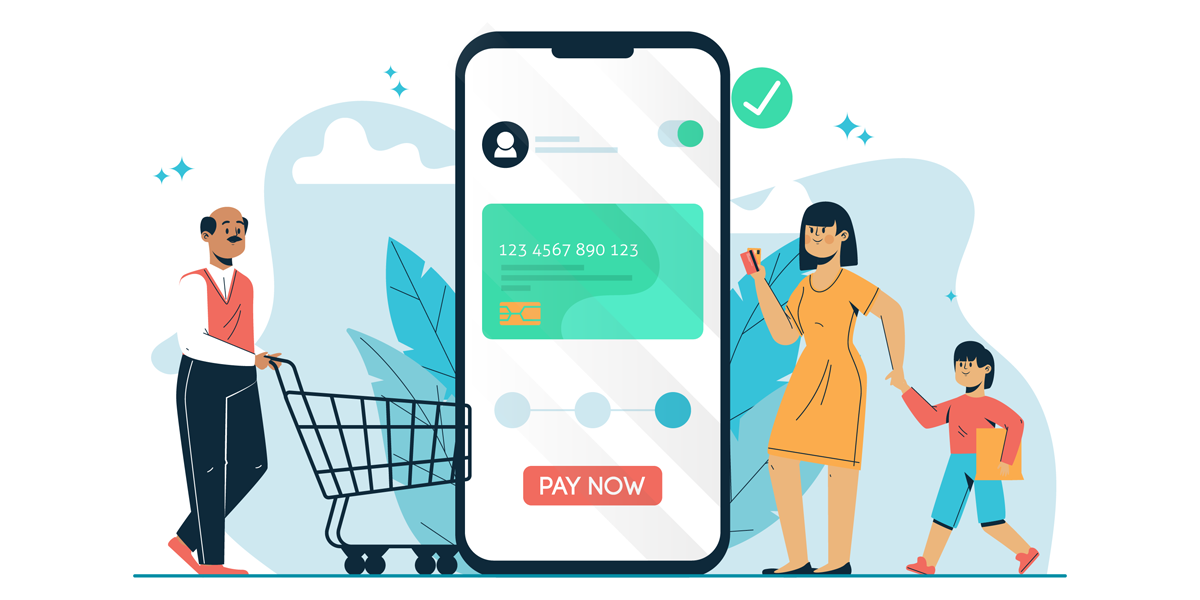
Long queues aren’t just an inconvenience, they are a revenue killer. According to a study published in Chain Store Age, 82% of consumers avoid stores with long lines, and 40% have left a store without purchasing due to the wait. For modern shoppers, patience is short and options are plenty. If a store feels slow, customers simply walk away.
But the impact of queues goes far beyond lost transactions. From reduced staff productivity to damaged brand perception, the hidden costs add up quickly. In this blog, we’ll uncover why long queues are hurting retailers more than they realize and how solutions like Mobile POS (mPOS) and Mobile Self-Checkout can eliminate the problem.
The Real Cost of Long Queues in Retail
Lost Sales & Cart Abandonment: Every abandoned basket is lost revenue. Customers today expect checkout to be as fast as online shopping. If a store takes longer than a few minutes to process, shoppers abandon purchases—sometimes for good.
Damaged Customer Experience: Queues leave lasting negative impressions. A shopper who waited 20 minutes once is less likely to return. In a competitive landscape, customer experience often decides whether they shop again or switch to competitors.
Operational Inefficiency: Staff stuck behind counters during peak times cannot assist customers on the floor. This means fewer upsell opportunities, lower basket values, and more stressed employees.
Brand Reputation Loss: Queue frustrations often spill online. A bad checkout experience can quickly lead to poor reviews, hurting brand image and local SEO rankings.
Why Traditional Fixes Don’t Work
Retailers often think the answer is adding more billing counters. In reality:
-
Many counters sit idle during non-peak hours.
-
Hardware costs go up, but utilization doesn’t.
-
Training and staffing needs increase.
The result? Higher expenses without solving the core problem.
How to Fix the Queue Problem (Smart Solutions)
Mobile POS (mPOS): Checkout Anywhere
With Mobile POS, staff are no longer tied to counters. They can assist customers and process payments anywhere on the floor. Benefits include:
-
Queue Busting: Staff bill customers on the spot.
-
Personalized Service: Access customer profiles and purchase history for tailored recommendations.
-
Higher Sales: Upsell/cross-sell suggestions appear in real time.
Mobile Self-Checkout: Store in the Customer’s Hands
Mobile Self-Checkout allows customers to scan, pay, and leave using their own phones. Benefits include:
-
Frictionless Experience: Customers shop at their pace, without queues.
-
Dynamic Promos: Real-time nudges (“Add $20 to unlock a free gift”) boost sales.
-
Lower Costs: No bulky kiosks or multiple counters needed.
Smart Receipts: Extend Engagement Post-Checkout
Even after checkout, Smart Receipts keep customers engaged. They replace paper slips with interactive receipts that can:
-
Capture feedback instantly.
-
Deliver loyalty updates and coupons.
-
Provide re-order and return options.
This not only reduces paper waste but also turns checkout into an opportunity for retention.
Key Takeaways for Retailers
-
Long queues are not just a customer frustration—they directly impact revenue, loyalty, and brand reputation.
-
Adding more counters is a costly band-aid.
-
The smarter fix is adopting Mobile POS, Mobile Self-Checkout, and Smart Receipts for seamless, scalable checkout experiences.
Conclusion
Modern retail success depends on how well you remove friction. Shoppers in 2025 expect speed, flexibility, and control. By eliminating queues through smarter checkout solutions, retailers not only recover lost sales but also build stronger customer relationships.
The choice is simple: invest in reducing wait times today, or risk losing tomorrow’s customers.





